JSXGraph integration within Eleda, a NoCode pedagogical authoring tool and platform
Christophe Bansart
Research and Development Director, KDetude EdTech company, Paris - France
christophe.bansart@kdetude.com
Abstract
During this JSXGraph conference, we would like to talk about how we have implemented JSXGraph with our NoCode technology to facilitate mathematical activity design. Then we will explore on how teachers can reuse and adapt existing activities to their learners needs.
To illustrate that, we will demonstrate how to translate existing activity, how to add tailored feedback depending on learners regular mistakes.
1. Product context
Nowadays, creating and adapting pedagogical activities in STEM is a difficult task for teachers. The reason for this is that there are no easy to use authoring tools to create interactive and randomised activities. Therefore, teachers are coerced into reusing existing resources as they are, without being able to adapt them to their learners’ needs.
Based on these observations, our company KDetude, strives to bring computational thinking to teachers’ creativity to make learners succeed. To achieve this, KDetude is developing Eleda, a unique educative mathematical ecosystem. It offers schools’ and teachers’ communities the ability to make randomised mathematical activities with building blocks, as known as NoCode approach. As such, learners can train without limits, and develop their critical thinking and scientific mindset. Eleda wants to make teachers the “makers” of their online pedagogical activities in math.
Our solution Eleda offers :
- A new generation of authoring tool for teachers: just as the Scratch building blocks system does, we want to offer teachers the opportunity to easily design randomised activities through blocks. Computational thinking and Makers spirit fuel all domains and education is being following suit. In the end, one activity made by a teacher can generate an infinite number of problems to solve, allowing their learners to experiment endlessly with math.
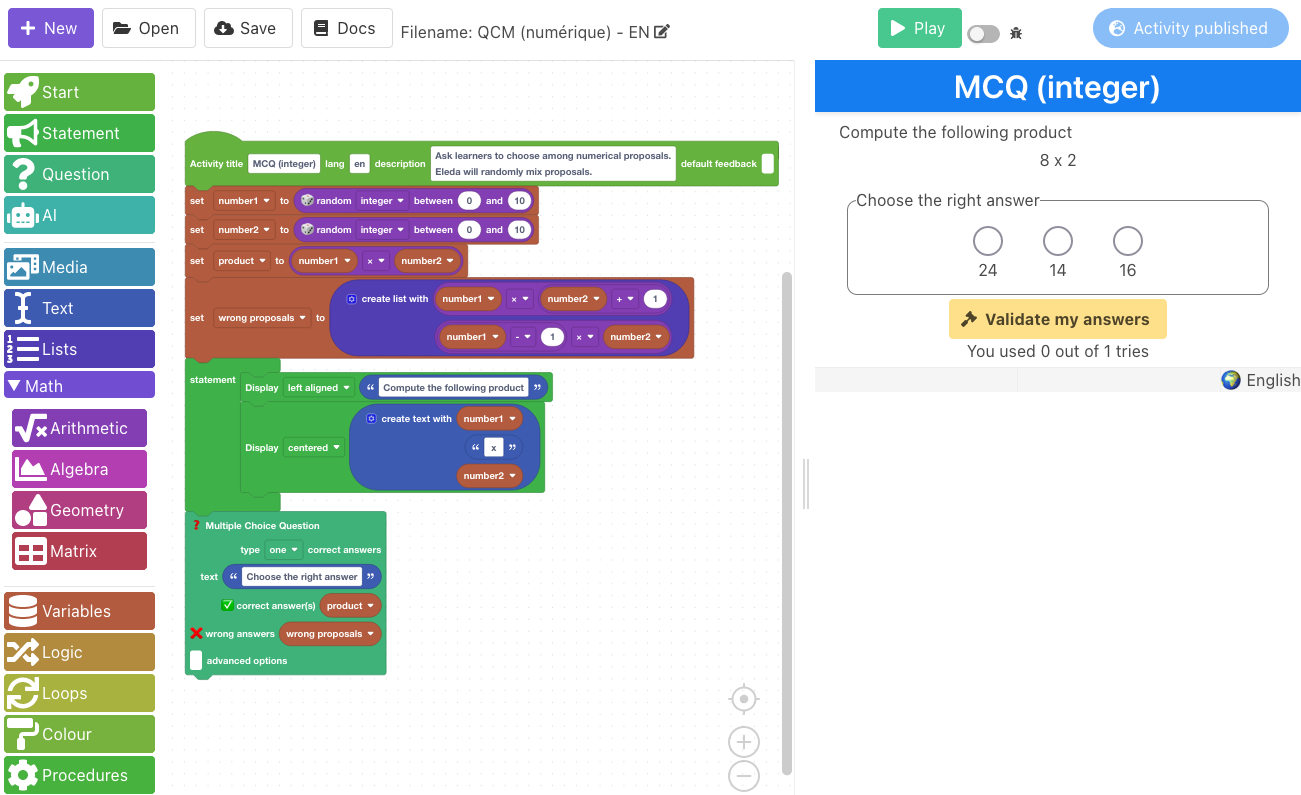
The authoring User Interface (on the left side the building blocks, on the right side the result)
- A new generation of pedagogical activities: learners receive smart and tailor-made feedback to figure out why they have not succeeded. Thus, learners experiment until they understand underlying concepts and become comfortable with them.
- A “makers” multilingual community: an open community to share, translate, adapt, and reuse activities among “makers”.
2. Our JSXGraph implementation
- We have implemented major geometric JSXGraph objects through blocks.
For instance a circle with the block circle: 
a line: 
a point: 
allows to produce a simple geometric figure as follows :
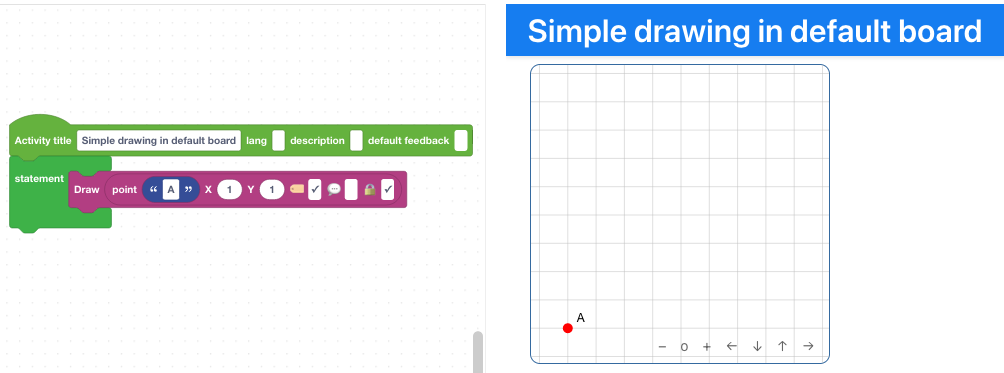
We have also added to the JSXGraph related blocks several general geometry blocks to compute for instance area and perimeter of a figure or compute Euclidean distance between two points.
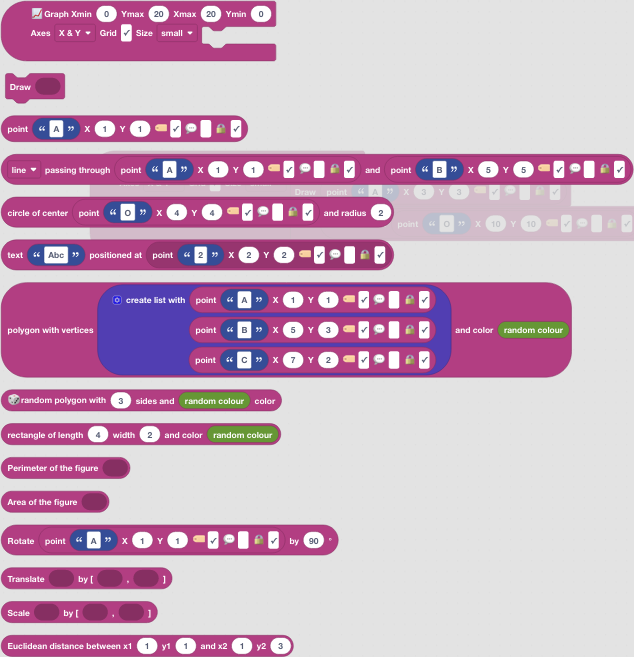
Thanks to that, we could design more complex geometric objects.
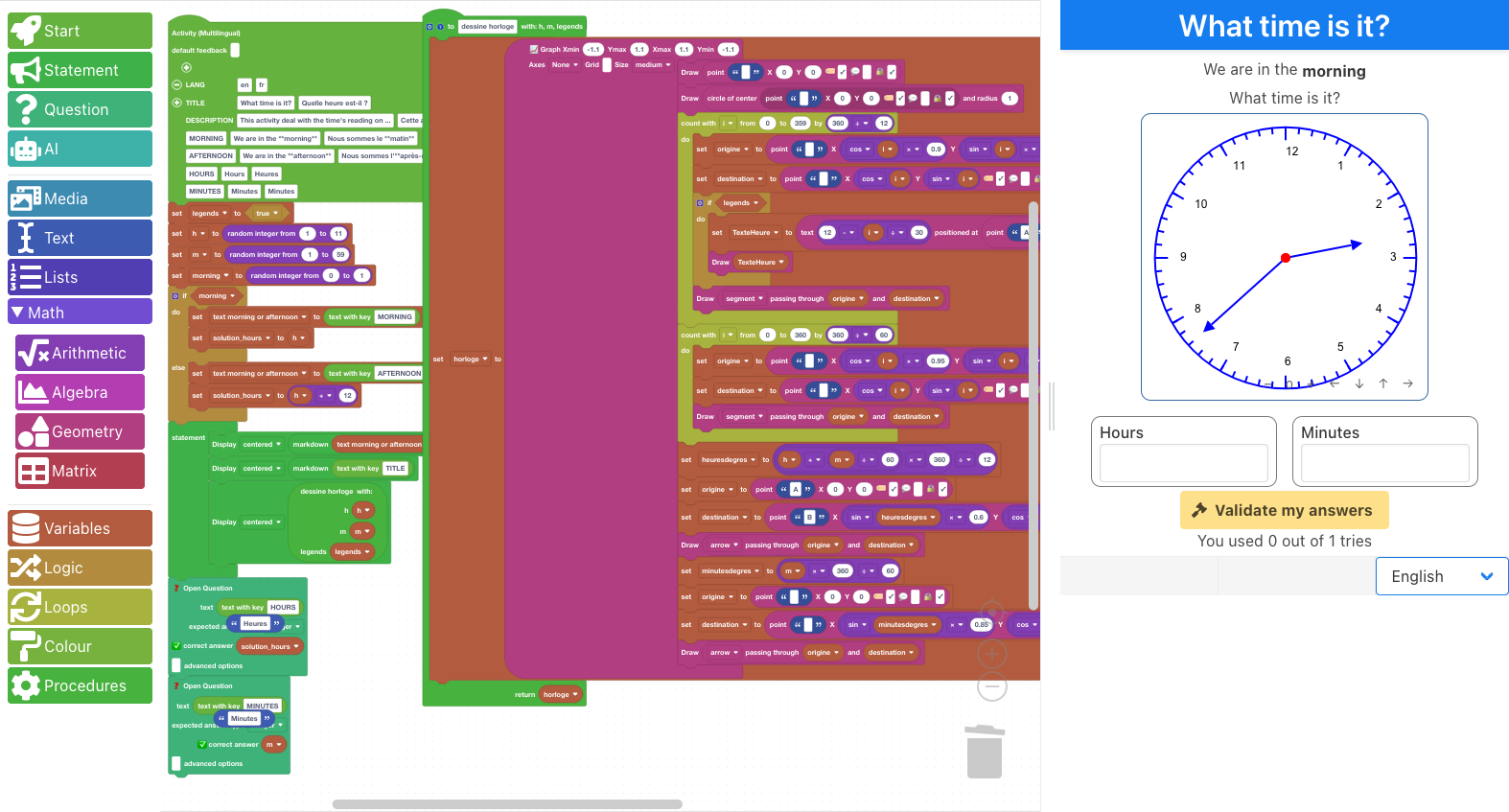
3. Bridging JSXGraph blocks with pedagogical blocks
We’ve implemented a wide math blocks library to allow teachers to design math activities. For instance
- Question blocks to design MCQ, Open Question to retrieve learners answers in different forms: fraction, numeric, algebric expressions
- Numeric blocks to manipulate and compute with numbers, fractions
- Computer Algebra systems blocks to manipulate algebraic items
- Feedback blocks to design activities with step-by-step questions and feedback that take into account learners’ answers. The objective is to guide learners and explain why his answer his wrong or incomplete in the activity’s given context.
Our NoCode implementation provides ability to mix all these latter blocks with jsxgraph blocks. Therefore, teachers can design complex pedagogical activities involving geometrical drawings. Geometrical drawings can evolve during the activity session. They can be updated depending on the learner’s answers to show or hide geometrical elements during an activity. It could be used to provide specific feedback to explain more or less in detail the reasoning, or explain by showing why an answer doesn’t work in a specific case.
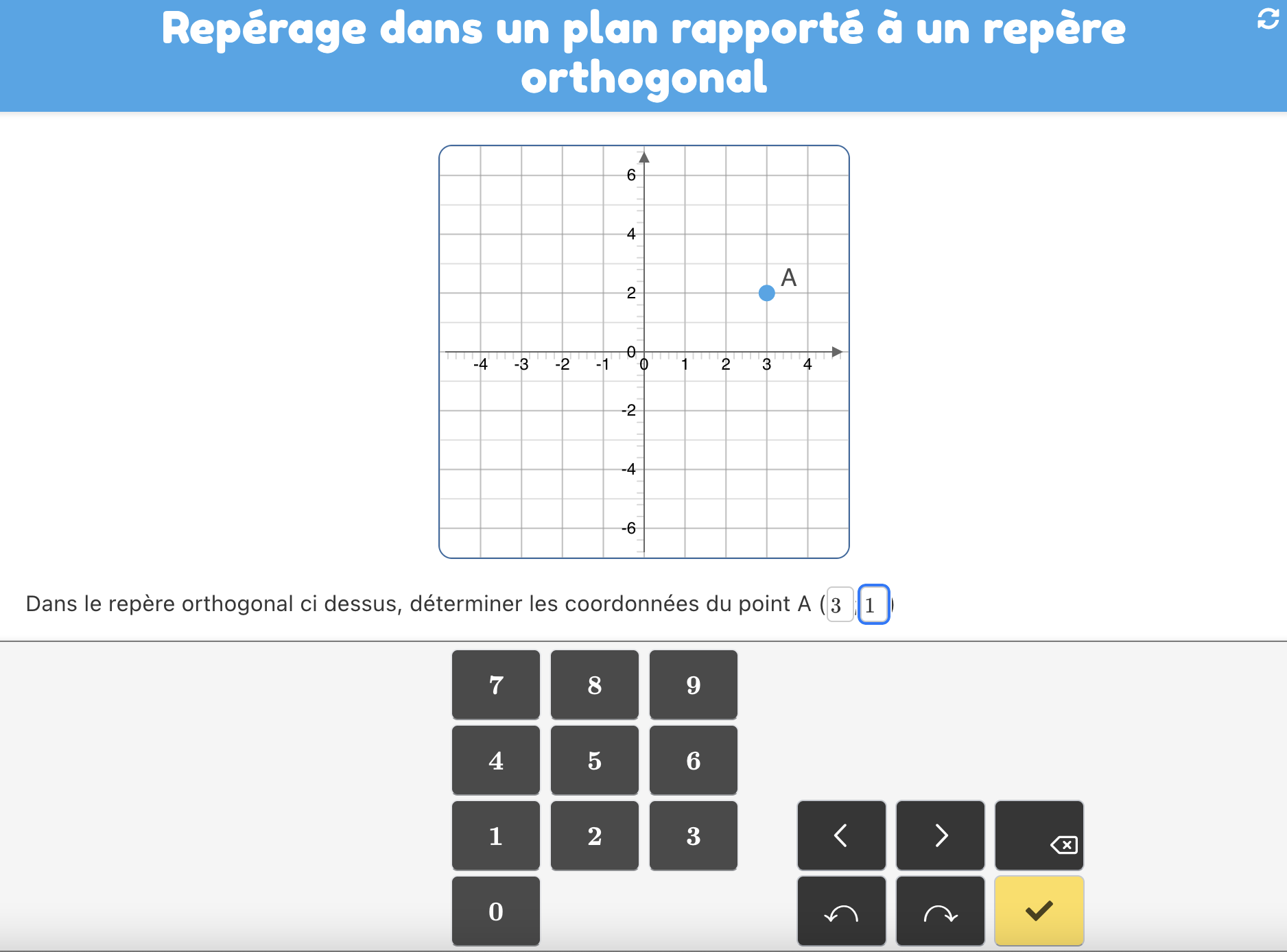
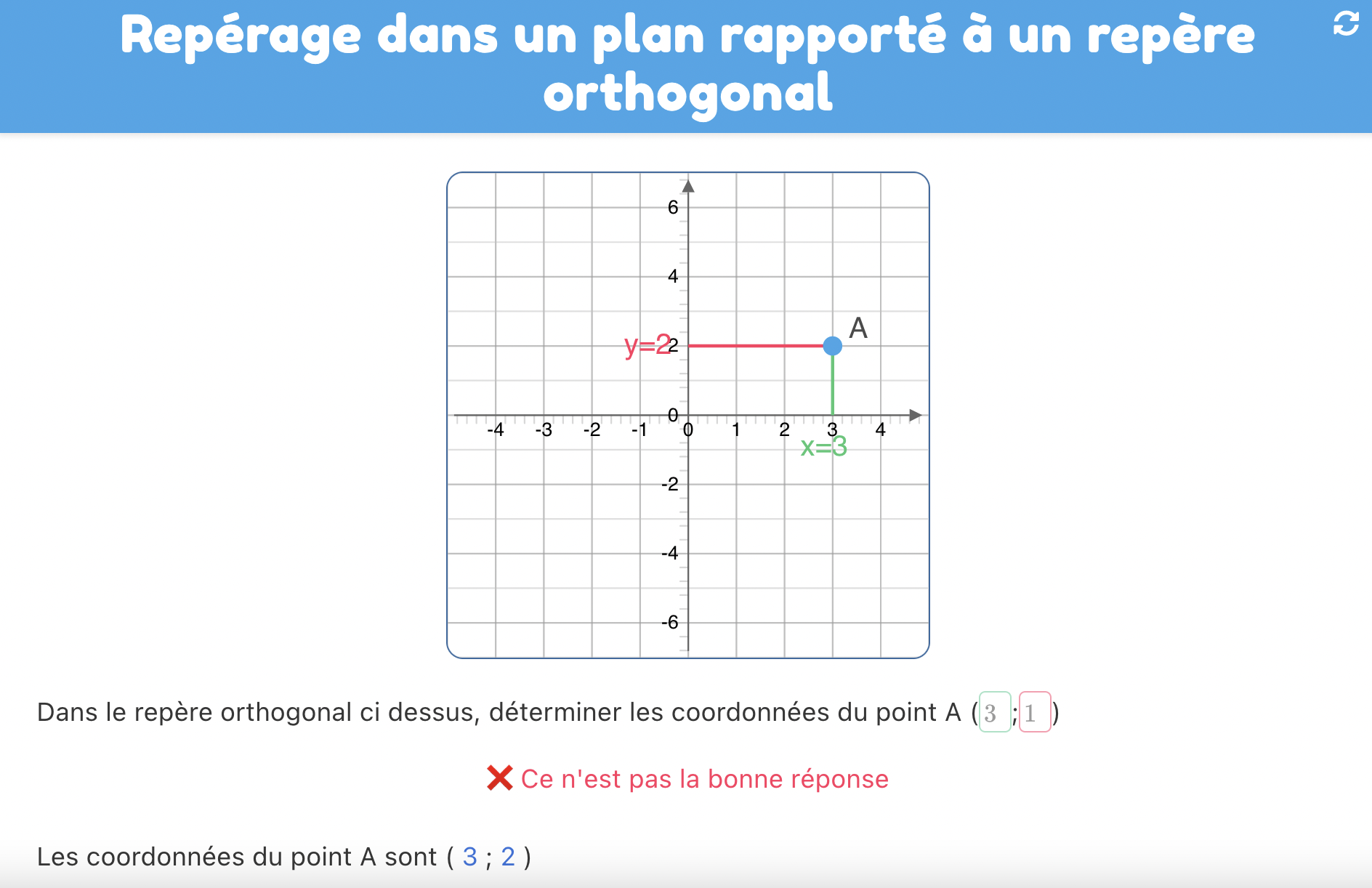
How to get an Eleda account
We have opened a early adopters program to allow teachers to build their own or reuse math activities freely. To get a Eleda free access contact us.